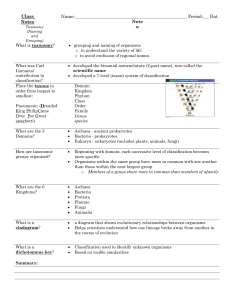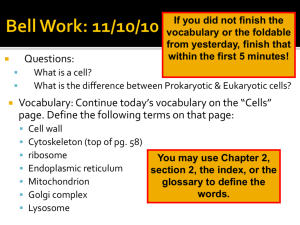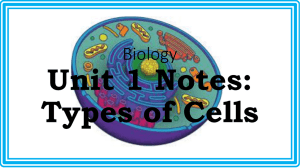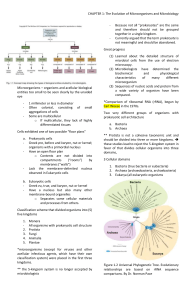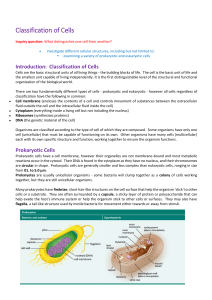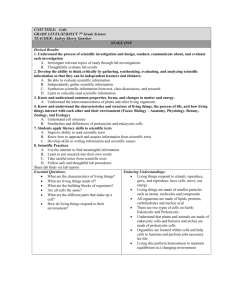One unifying theme is the theory of evolution by natural selection
advertisement
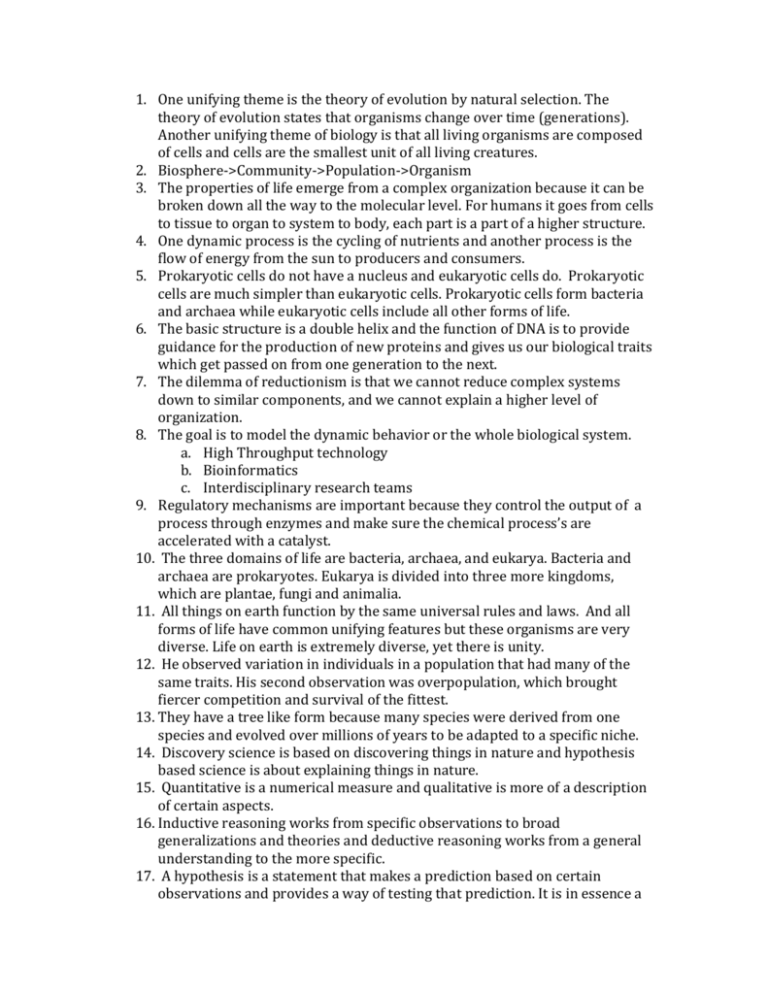
1. One unifying theme is the theory of evolution by natural selection. The theory of evolution states that organisms change over time (generations). Another unifying theme of biology is that all living organisms are composed of cells and cells are the smallest unit of all living creatures. 2. Biosphere->Community->Population->Organism 3. The properties of life emerge from a complex organization because it can be broken down all the way to the molecular level. For humans it goes from cells to tissue to organ to system to body, each part is a part of a higher structure. 4. One dynamic process is the cycling of nutrients and another process is the flow of energy from the sun to producers and consumers. 5. Prokaryotic cells do not have a nucleus and eukaryotic cells do. Prokaryotic cells are much simpler than eukaryotic cells. Prokaryotic cells form bacteria and archaea while eukaryotic cells include all other forms of life. 6. The basic structure is a double helix and the function of DNA is to provide guidance for the production of new proteins and gives us our biological traits which get passed on from one generation to the next. 7. The dilemma of reductionism is that we cannot reduce complex systems down to similar components, and we cannot explain a higher level of organization. 8. The goal is to model the dynamic behavior or the whole biological system. a. High Throughput technology b. Bioinformatics c. Interdisciplinary research teams 9. Regulatory mechanisms are important because they control the output of a process through enzymes and make sure the chemical process’s are accelerated with a catalyst. 10. The three domains of life are bacteria, archaea, and eukarya. Bacteria and archaea are prokaryotes. Eukarya is divided into three more kingdoms, which are plantae, fungi and animalia. 11. All things on earth function by the same universal rules and laws. And all forms of life have common unifying features but these organisms are very diverse. Life on earth is extremely diverse, yet there is unity. 12. He observed variation in individuals in a population that had many of the same traits. His second observation was overpopulation, which brought fiercer competition and survival of the fittest. 13. They have a tree like form because many species were derived from one species and evolved over millions of years to be adapted to a specific niche. 14. Discovery science is based on discovering things in nature and hypothesis based science is about explaining things in nature. 15. Quantitative is a numerical measure and qualitative is more of a description of certain aspects. 16. Inductive reasoning works from specific observations to broad generalizations and theories and deductive reasoning works from a general understanding to the more specific. 17. A hypothesis is a statement that makes a prediction based on certain observations and provides a way of testing that prediction. It is in essence a way of asking a question in a way that it can be tested. A hypothesis that has been tested over and over can be made into a theory and so on. 18. In a controlled experiment the scientist is only testing one factor at a time. 19. The everyday meaning of theory is an inkling or a thought. But a scientific theory is something that is has been tested time and time again and is almost certainly true. 20. Science is influenced by social and cultural values because new ideas come up in science all the time and scientists are inclined to study about things that at the time are popular or in demand. 21. Technology applies scientific knowledge for a specific reason and science is the discovery of new things. Technology is the product of science and science and technology work hand in hand.





